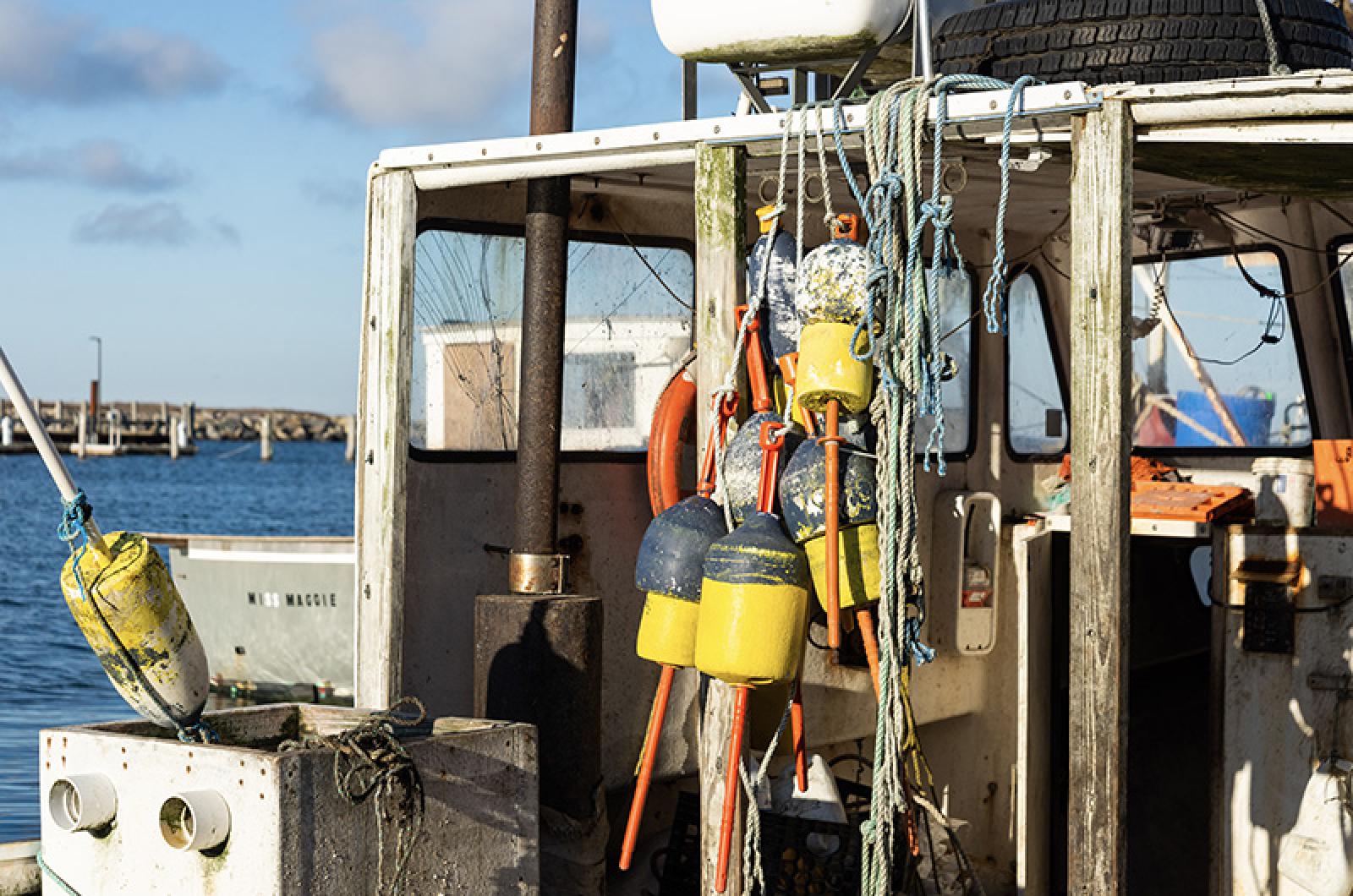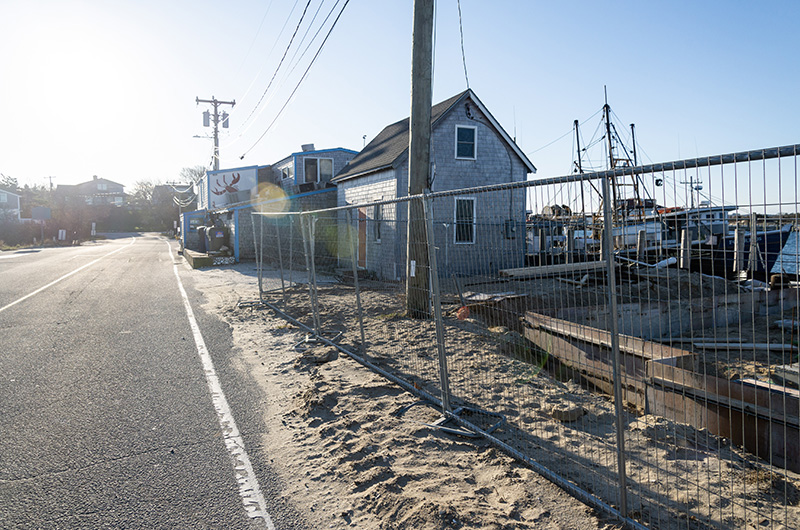Marked by a single, blinking green light, the entrance through the channel into Menemsha Harbor is narrow. Though the current runs hard through the channel as tides rise and fall, the water inside the harbor is generally flat — unless the wind blows from the northwest.
In a northwest breeze, the Island’s angled, northern shore creates a large funnel, pumping surges down into Menemsha Bight that roll between the jetties. Boats bounce against their pilings and hundreds of tons of sand are swept into the bottom of the harbor.
With the floating docks removed, seasonal travelers dispersed and the fishing fleet at rest, the third week of December is traditionally a time for John Packer and a small crew from Offshore Engineering to lift the sand back out.
“It’s easier on the towns to do a little every year,” Mr. Packer says, acknowledging that Menemsha isn’t the only harbor on the Island whose dimensions wander with the effects of currents and weather.
“Like rust never sleeps, the Island never stops moving,” Mr. Packer says.
In the parking lot beyond the Texaco station, he switches out the big green crane from his barge and drives on an excavator with rubber tires and a bucket dredge at the end of its arm. With the help of two small boats, the team pirouettes the barge in the wind. One end looks like it holds an airport control tower.
The customized barge is called Innovative, “because we’re always doing something,” Mr. Packer says.
Removing sand from the harbor is essential for the restoration of Menemsha’s blue-water fishing fleet, allowing larger vessels the ability to come and go.
“The Martha Rose bumped the bottom a couple times this summer,” Mr. Packer says.
The 77-foot scallop dragger, run by Wes Brighton, Ian Andres and Otto Osmers, draws crowds to the Menemsha bulkhead at the peak of the summer season when they sell sea scallops from the deck of the boat on Saturday mornings. Now, instead of eager crowds there are the black spoils of the dredge looming head height over half the parking lot. The sand is black when it comes off the bottom of the harbor. When it rains the pigmented nutrients will wash out, leaving behind a pile of fine quartz sand which will be used to replenish local beaches.
Along the bulkhead, construction continues at Larsen’s Fish Market. A small concrete basement yawns from the center of the job site, which is quiet late on Saturday afternoon. The sill that will hold the walls is framed by plywood forms.
Against the dock, last in the line of fishing vessels, sits a small white boat called Merlin. On deck Chris Stein knocks crusted seaweed and silt from her bulwarks. Mr. Stein has fished for mostly lobster and conch out of Menemsha for 37 years. He is among the newer members of the fleet.
“I’ll go out once more, but I think everybody’s pretty much finished,” he says, nodding toward his neighbors.
Above Merlin, on top of the bulkhead at Menemsha Fish Market, Stanley Larsen and his crew tend to a steady stream of customers in the last hour before dusk.
“We’re going to close down in January and February. It’ll be the first time in 18 years,” Mr. Larsen says, between passes from one end of the market to the other, filling orders for fresh and prepared food, never quite standing still.









Comments (1)
Comments
Comment policy »